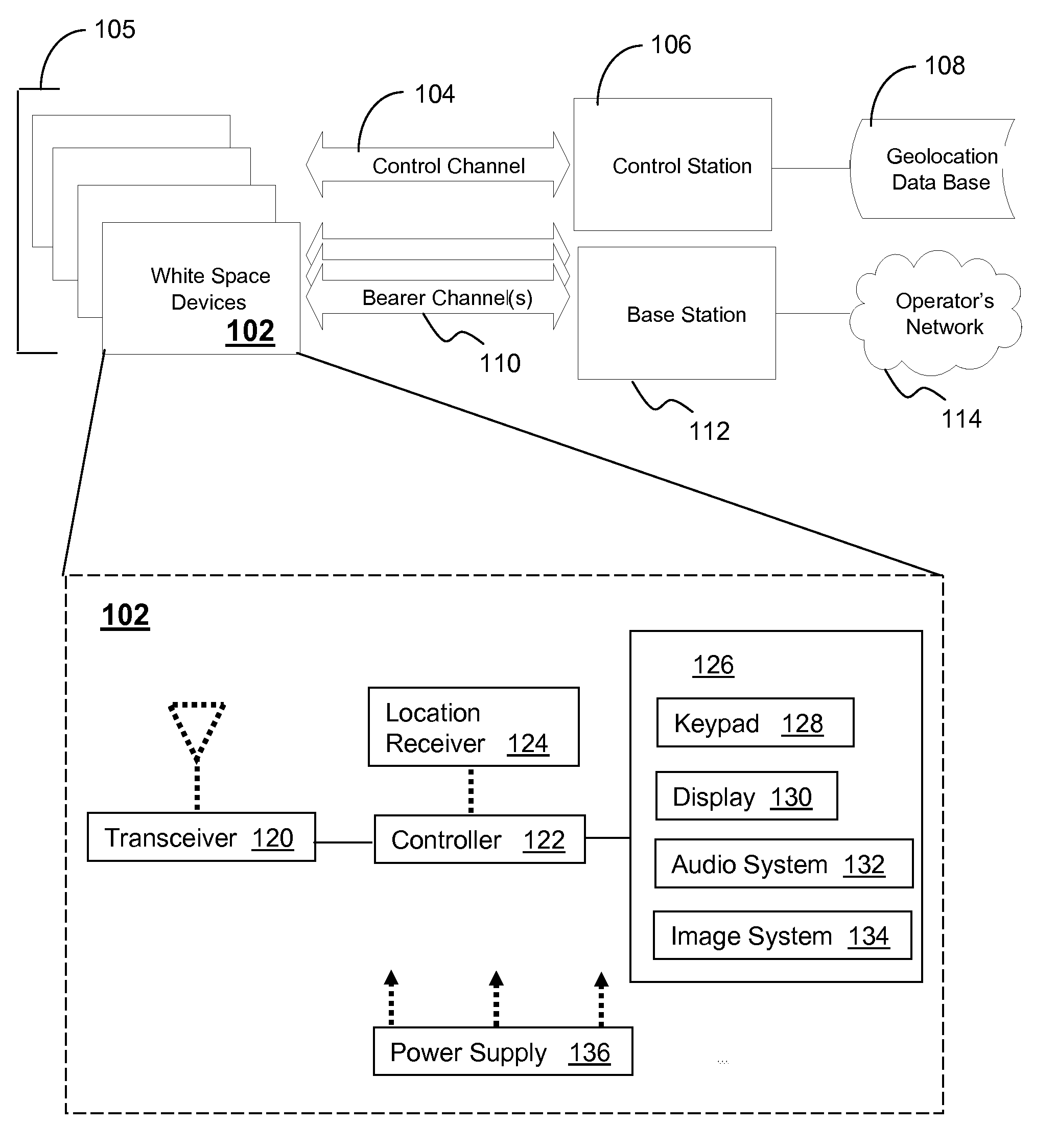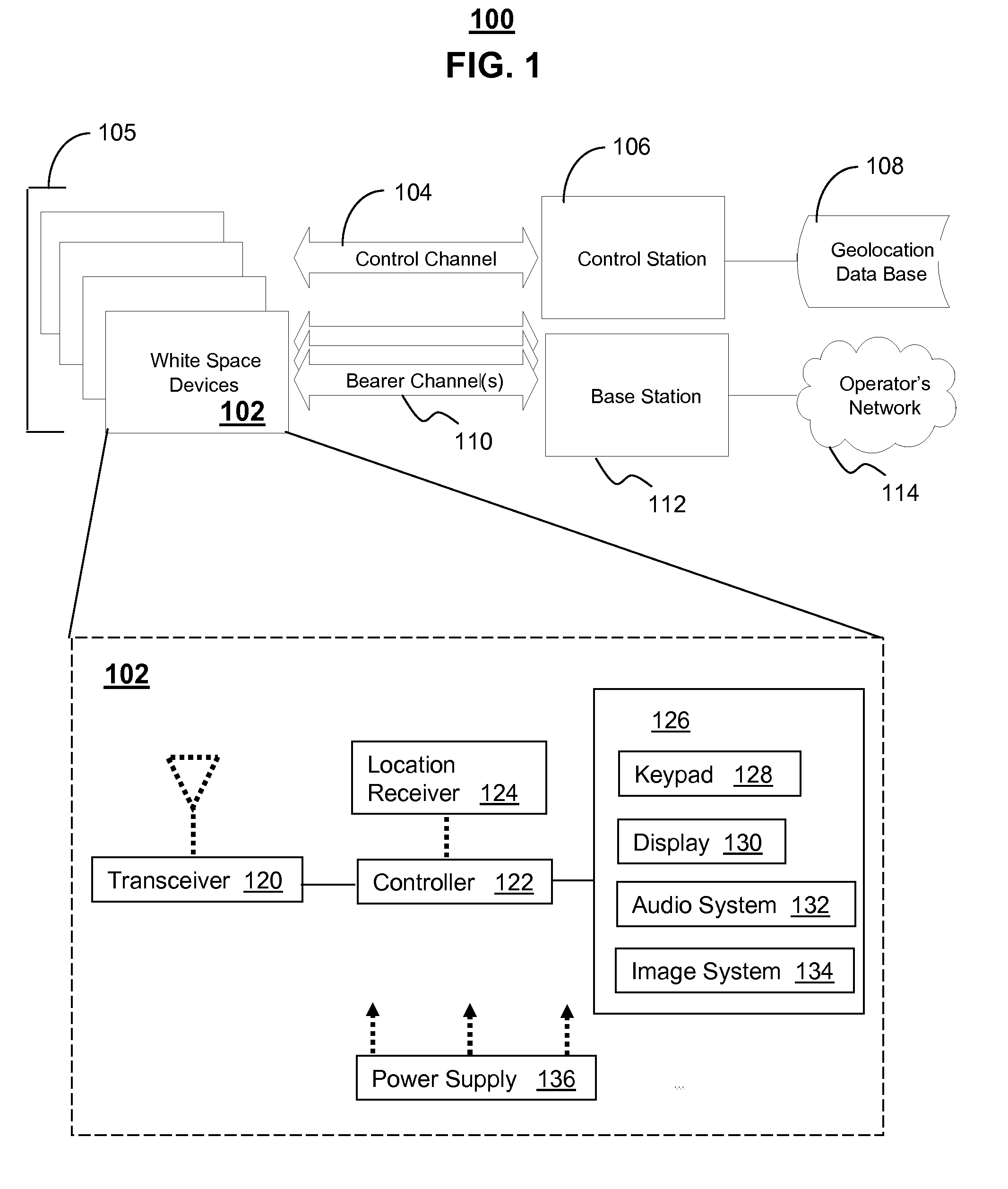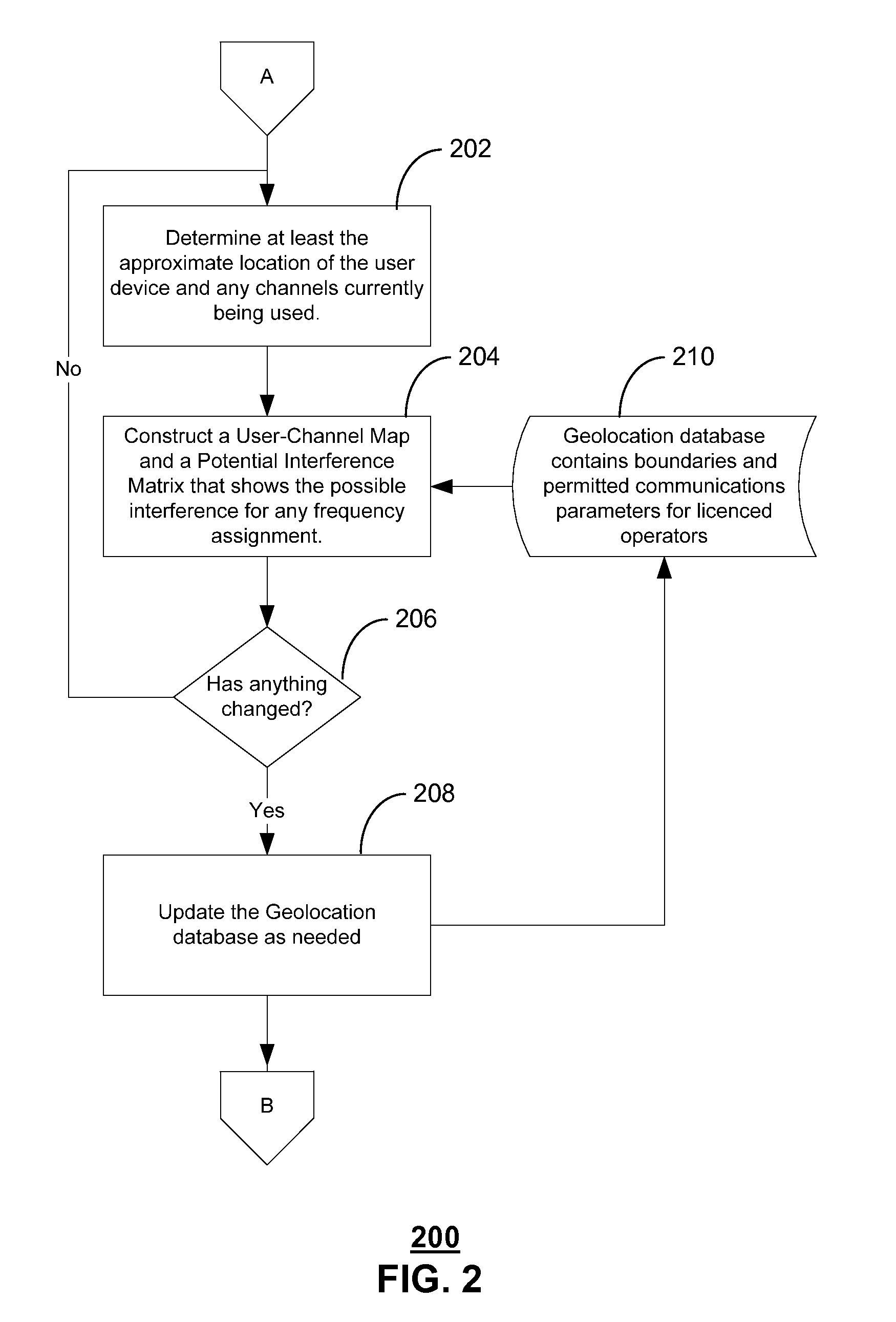System and method for dynamic frequency assignment
a dynamic frequency and assignment technology, applied in the field of radiofrequency spectrum allocation, can solve the problems of limiting the amount of spectrum assigned, the requirements do not address the way unlicensed devices are used, and the rest of the spectrum is left unassigned, so as to minimize interference, minimize interference, and minimize the effect of interference calculation
- Summary
- Abstract
- Description
- Claims
- Application Information
AI Technical Summary
Problems solved by technology
Method used
Image
Examples
example 1
Protocol Model
[0076]In both examples, let rij denote the Euclidean distance between a pair of devices. Following Gupta and Kumar [2000], the first example might called a “protocol model.” In this case:
dij={1ifrij≤Δ0ifrij>Δ
Where Δ represents the minimum desired separation between devices.
example 2
Interference Model
[0077]In the second case, the “interference model,” device i has transmit power Pi, directional antenna gain Gij and dij=PiGijrij−α to the dij=PiGijrij−α, where α≧2. (As used here, for simplicity, the factor Gij includes both the transmit and receive antenna gains.) That is, dij is the power received by device j from device i when propagation follows a pure power law model with exponent α. (See Rappaport [2002] for a survey of the various values of α and the conditions in which different values apply.)
Notice that in Example 1 we have dij=dji to the dij=dji but this need not be the case in general. Example 2 illustrates this.
[0078]The examples above are just two of many ways to treat the potential interference. For example, Aardal et al. (2007) suggest an extension of Example 1 in which the penalties dij take multiple decreasing values as the distance rij increases beyond successive thresholds.
[0079]In principle, if the devices were suitably equipped, each device co...
PUM
 Login to View More
Login to View More Abstract
Description
Claims
Application Information
 Login to View More
Login to View More - R&D
- Intellectual Property
- Life Sciences
- Materials
- Tech Scout
- Unparalleled Data Quality
- Higher Quality Content
- 60% Fewer Hallucinations
Browse by: Latest US Patents, China's latest patents, Technical Efficacy Thesaurus, Application Domain, Technology Topic, Popular Technical Reports.
© 2025 PatSnap. All rights reserved.Legal|Privacy policy|Modern Slavery Act Transparency Statement|Sitemap|About US| Contact US: help@patsnap.com



